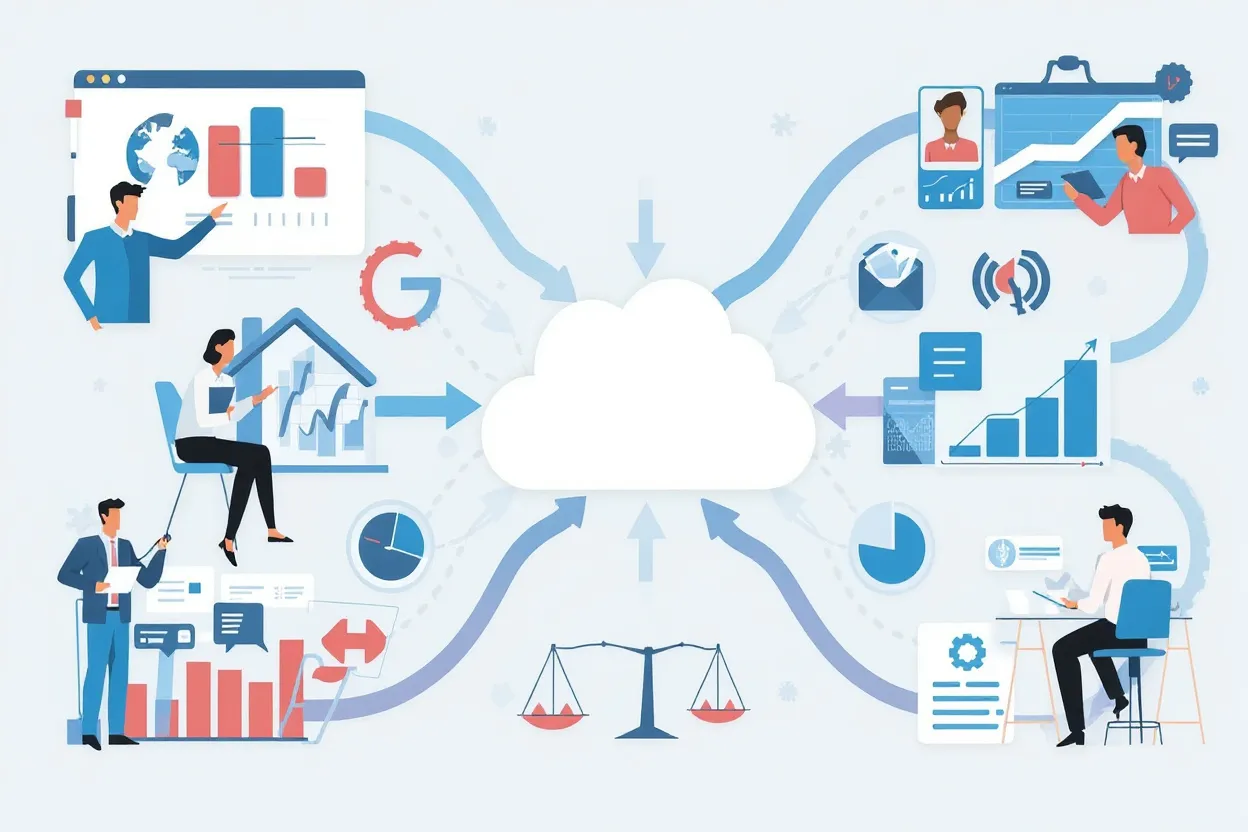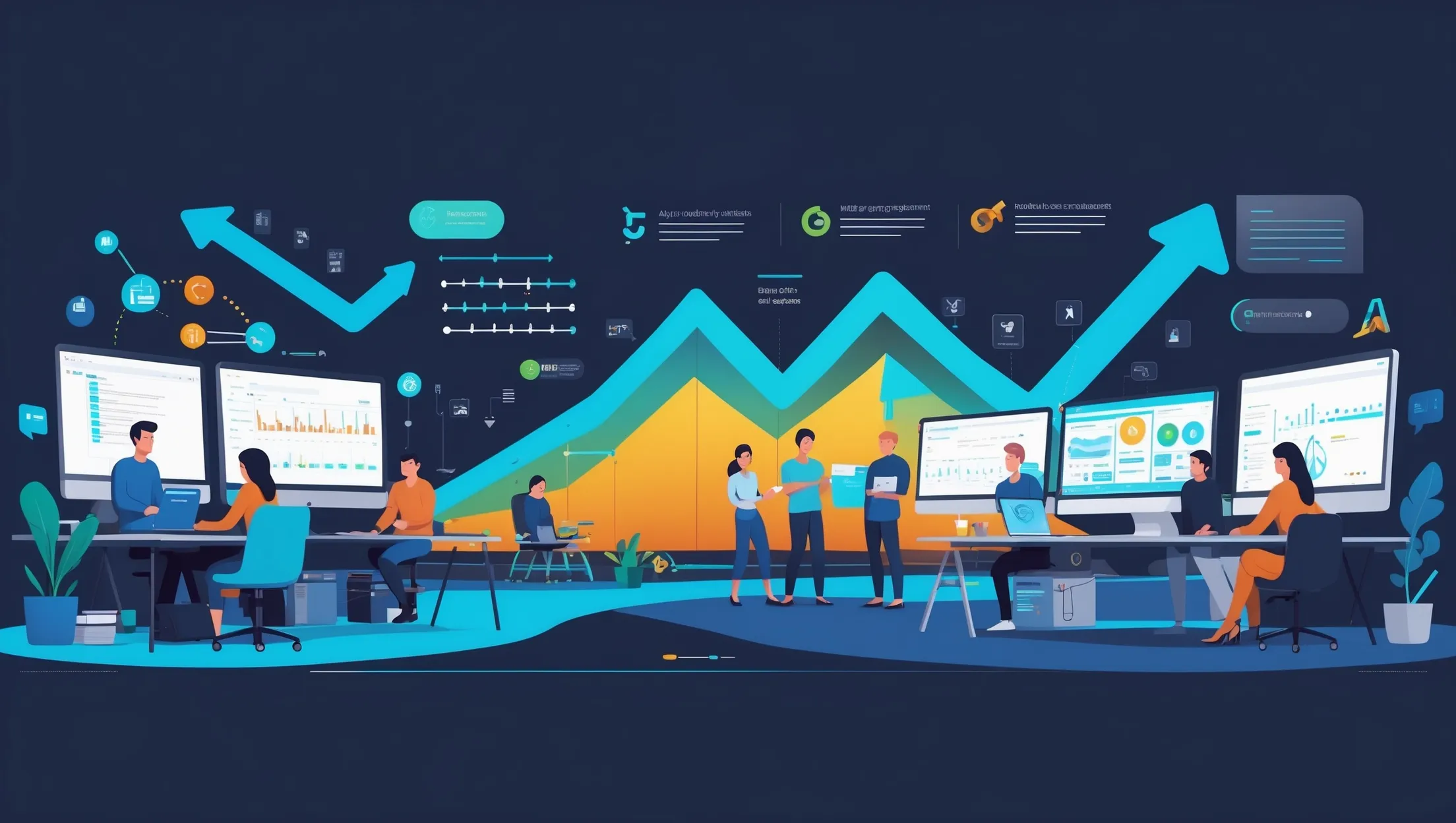
Why your best engineer makes a terrible technical lead
Promoting your strongest individual contributor to technical lead often backfires spectacularly. Here's why technical excellence doesn't predict leadership success, and how to identify engineers who can actually lead teams effectively.
“Let’s promote our best engineer to technical lead. They know the system better than anyone, and the team respects their technical expertise.”
I’ve heard this reasoning countless times, and I’ve watched it destroy both brilliant engineers and entire teams. Last year, I worked with a startup that promoted their most talented backend developer to lead a team of eight engineers. Within six months, three engineers had quit, project deliveries were consistently late, and the newly promoted lead was working 70-hour weeks trying to personally fix every problem.
The fundamental mistake? Assuming that technical excellence predicts leadership success.
The skills that make someone an exceptional individual contributor - deep focus, perfectionism, solving complex problems independently - often work directly against the skills needed for effective team leadership. Leadership requires fundamentally different capabilities: communication, delegation, conflict resolution, and helping others succeed rather than doing the work yourself.
Here’s why promoting your best engineer to technical lead often backfires, how to identify engineers who can actually lead teams effectively, and what to do when you’ve already made the promotion mistake.
The individual contributor excellence trap
What makes engineers great at individual work
Exceptional individual contributors excel because of specific traits and working styles:
Deep Focus Capability: They can maintain intense concentration on complex technical problems for extended periods without distraction.
Perfectionist Standards: They refuse to ship suboptimal solutions and will spend extra time ensuring technical excellence.
Independent Problem Solving: They prefer working through challenges alone, using their expertise to find elegant solutions without external input.
Technical Depth: They develop deep expertise in specific areas and can handle the most challenging technical problems.
Personal Ownership: They take complete responsibility for their work and prefer controlling all aspects of implementation.
These traits create tremendous value when applied to individual technical work. But they become liabilities when applied to team leadership.
Why these strengths become leadership weaknesses
Deep Focus vs Team Awareness: Leaders need to maintain awareness of multiple team members, projects, and priorities simultaneously. The deep focus that enables great individual work prevents the broad awareness needed for team leadership.
Perfectionism vs Pragmatic Decisions: Team leaders must make pragmatic decisions that balance technical ideals with timeline constraints, business requirements, and team capabilities. Perfectionist standards that work for individual contributions can paralyze team progress.
Solo Problem Solving vs Collaborative Leadership: Effective leaders facilitate team problem-solving rather than solving problems themselves. Engineers who prefer independent work often struggle to step back and enable others.
Technical Depth vs Communication Skills: Leadership requires explaining technical concepts to varied audiences, facilitating discussions between team members with different expertise levels, and translating business requirements into technical direction.
Personal Control vs Delegation: Individual contributors control their own work quality and timeline. Leaders must achieve results through others, requiring delegation skills and tolerance for approaches different from their own.
Facing a leadership challenge right now?
Don't wait for the next fire to burn you out. In a 30-minute discovery call we'll map your blockers and outline next steps you can use immediately with your team.
The leadership skills that matter for technical teams
Communication and facilitation
Technical leadership is fundamentally about communication:
Technical Translation: Converting complex technical concepts into language that stakeholders can understand and act upon.
Conflict Resolution: Facilitating productive discussions when team members disagree about technical approaches, priorities, or implementation details.
Meeting Facilitation: Running effective technical discussions, code reviews, and planning sessions that engage all team members and produce clear outcomes.
Feedback Delivery: Providing constructive feedback about technical work, process improvements, and professional development in ways that motivate rather than discourage.
Cross-Team Coordination: Communicating technical dependencies, constraints, and progress to other teams and stakeholders.
Delegation and development
Effective technical leaders multiply their impact through others:
Task Delegation: Assigning work based on team member capabilities, growth goals, and project requirements rather than doing everything themselves.
Skill Development: Identifying team member strengths and growth areas, then creating opportunities for skill building and advancement.
Knowledge Sharing: Ensuring technical knowledge is distributed across the team rather than concentrated in individual experts.
Mentoring: Helping junior engineers develop both technical skills and judgment about architecture, code quality, and problem-solving approaches.
Team Building: Creating team dynamics that encourage collaboration, knowledge sharing, and mutual support.
Strategic thinking and decision making
Technical leaders must balance multiple considerations:
Business Alignment: Understanding how technical decisions impact business goals and making trade-offs that serve both technical and business requirements.
Technical Debt Management: Making informed decisions about when to prioritize technical debt reduction versus new feature development.
Architecture Decisions: Considering long-term maintainability, team skills, and business growth when making architectural choices.
Resource Planning: Estimating project timelines, identifying bottlenecks, and planning team capacity allocation.
Risk Assessment: Identifying technical risks, security concerns, and operational challenges before they impact the business.
Identifying real leadership potential
Early indicators of leadership capability
Some engineers naturally demonstrate leadership behaviors before being promoted:
Collaborative Problem Solving: They naturally involve others in technical discussions and seek input from team members with relevant expertise.
Knowledge Sharing: They proactively document solutions, teach others, and contribute to team knowledge rather than hoarding expertise.
Business Curiosity: They ask questions about business requirements, user needs, and product strategy rather than focusing only on technical implementation.
Conflict Mediation: They help resolve disagreements between team members and facilitate productive technical discussions.
Process Improvement: They identify team process problems and propose solutions that benefit everyone rather than just optimizing their own work.
Communication assessment
Leadership requires strong communication across different contexts:
Technical Explanation: Can they explain complex technical concepts clearly to both technical and non-technical audiences?
Written Communication: Do they write clear technical documentation, helpful code reviews, and informative status updates?
Meeting Participation: Do they contribute constructively to meetings, ask clarifying questions, and help move discussions toward actionable outcomes?
Feedback Reception: How do they respond to feedback about their technical work and working style? Can they incorporate input without becoming defensive?
Difficult Conversations: Are they willing to address problems directly and constructively rather than avoiding conflict or complaining without proposing solutions?
Delegation readiness
Future leaders show signs of being able to work through others:
Teaching Orientation: They enjoy helping colleagues learn new technologies and problem-solving approaches.
Task Sharing: They’re willing to let others work on interesting problems rather than claiming all the challenging work for themselves.
Quality Tolerance: They can accept that others might solve problems differently while still meeting quality standards.
Progress Tracking: They can track project progress and identify problems without micromanaging implementation details.
Team Focus: They think about team capabilities and capacity rather than just their own productivity and interests.
Coaching for Tech Leads & CTOs
Ongoing 1:1 coaching for startup leaders who want accountability, proven frameworks, and a partner to help them succeed under pressure.
The promotion process that actually works
Gradual leadership introduction
Instead of sudden promotion to full leadership responsibility, create gradual transitions:
Project Leadership: Start with leadership of specific projects or initiatives rather than full team leadership.
Mentorship Roles: Assign responsibility for onboarding new team members or mentoring junior engineers.
Technical Specialization: Lead technical decision-making in specific areas while learning general leadership skills.
Cross-Team Coordination: Take responsibility for coordinating with other teams on technical dependencies and integration.
Process Ownership: Lead improvement of specific team processes like code review, deployment, or technical planning.
Leadership skill development
Provide explicit training and support for leadership skills:
Communication Training: Help engineers develop skills for technical communication, meeting facilitation, and difficult conversations.
Management Mentoring: Pair new technical leaders with experienced managers who can provide guidance and feedback.
Leadership Education: Provide access to leadership training, books, and other resources focused on technical team leadership.
Feedback Systems: Create regular feedback mechanisms that help new leaders understand their impact and areas for improvement.
Failure Recovery: Support new leaders through inevitable mistakes and help them learn from leadership challenges.
Trial periods and evaluation
Make leadership transitions reversible and evaluable:
Defined Trial Periods: Establish clear timeframes for evaluating leadership effectiveness with specific success criteria.
Regular Check-ins: Schedule frequent one-on-ones with new leaders to assess progress and provide support.
Team Feedback: Gather input from team members about leadership effectiveness and team dynamics.
Performance Metrics: Track team performance indicators like velocity, quality, and retention during leadership transitions.
Alternative Paths: Create respected individual contributor career tracks for engineers who excel at technical work but don’t thrive in leadership roles.
What to do when you’ve already made the mistake
Recognizing the warning signs
Early intervention can save both the engineer and the team:
Team Performance Decline: Decreased velocity, missed deadlines, or quality problems that weren’t present before the promotion.
Communication Breakdown: Increased conflicts, unclear direction, or team members bypassing the new leader to communicate with others.
Leader Burnout: The new leader working excessive hours, trying to do everything personally, or showing signs of stress and overwhelm.
Team Disengagement: Team members becoming less collaborative, asking fewer questions, or showing decreased enthusiasm for their work.
Knowledge Hoarding: The new leader maintaining control over critical technical decisions rather than developing team capabilities.
Recovery strategies
When leadership transitions aren’t working, act quickly:
Additional Support: Provide immediate management coaching, leadership training, or temporary management support.
Scope Reduction: Reduce leadership responsibilities while the new leader develops necessary skills.
Team Restructuring: Temporarily restructure the team to reduce complexity while leadership skills develop.
Mentorship Intensification: Assign experienced technical managers to provide intensive mentoring and guidance.
Alternative Roles: Create technical leadership roles that play to the engineer’s strengths while addressing team needs differently.
Creating graceful transitions
If leadership isn’t working, preserve the engineer’s value and team relationships:
Dignity Preservation: Handle role changes in ways that maintain the engineer’s reputation and value within the organization.
Strength Focus: Transition the engineer to roles that leverage their technical expertise and individual contribution strengths.
Learning Integration: Help the engineer integrate leadership lessons into their individual contributor work.
Team Communication: Communicate role changes to the team in ways that maintain relationships and team cohesion.
Career Path Clarity: Ensure the engineer understands their career progression options and value to the organization.
Got a leadership question?
Share your toughest challenge and I might feature it in an upcoming episode. It's free, anonymous, and you'll get extra resources in return.
Building alternative leadership paths
Technical architecture leadership
Create leadership roles that leverage technical depth:
Technical Architecture: Lead technical architecture decisions and long-term technical strategy without people management responsibilities.
Platform Leadership: Own specific technical platforms or infrastructure that enables other teams’ success.
Technical Advisory: Provide technical guidance and decision-making support across multiple teams and projects.
Innovation Leadership: Lead research and development of new technologies, tools, and approaches.
Quality Leadership: Own technical quality standards, testing strategies, and development process improvements.
Specialist leadership tracks
Recognize that different types of technical leadership serve different needs:
Domain Expertise: Deep specialists who provide technical leadership in specific areas like security, performance, or data architecture.
Tool and Process Innovation: Engineers who lead improvements in development tools, deployment processes, and team productivity.
Technical Communication: Engineers who excel at technical writing, documentation, and knowledge sharing across teams.
Vendor and Technology Evaluation: Engineers who lead evaluation and adoption of new technologies, tools, and vendor relationships.
Crisis Response: Engineers who lead technical incident response and system reliability improvements.
Senior individual contributor career tracks
Create respected career advancement for engineers who thrive as individual contributors:
Principal Engineer Tracks: Career progression that provides senior technical roles without management responsibilities.
Technical Consulting: Internal consulting roles where senior engineers provide expertise across multiple teams and projects.
Specialty Development: Deep expertise development in cutting-edge technologies or complex technical domains.
Cross-Team Coordination: Technical coordination roles that facilitate collaboration without people management.
Strategic Technical Planning: Involvement in technical strategy and long-term planning without day-to-day team leadership.
The role of fractional CTOs in leadership development
Many organizations struggle with technical leadership development because they lack experienced technical managers who can mentor and develop leadership skills.
Fractional CTOs can provide crucial support for leadership development:
Leadership Assessment: Evaluate engineers for leadership potential using experience-based criteria rather than assumptions about technical excellence.
Skill Development: Provide mentoring and training for engineers transitioning to leadership roles.
Process Design: Create leadership development processes that work for technical teams and engineering culture.
Performance Evaluation: Help evaluate leadership effectiveness and provide guidance for improvement.
Alternative Path Creation: Design career tracks that value technical excellence without requiring people management.
This external expertise can prevent the common mistake of promoting based on technical skills alone and help create successful technical leadership transitions.
Conclusion: leadership is a different skill set
The fundamental insight is that technical leadership requires a different skill set than individual technical excellence. The sooner organizations recognize this, the better they can serve both their engineers and their teams.
Key principles for technical leadership transitions
Skills Assessment: Evaluate communication, collaboration, and delegation capabilities rather than just technical expertise.
Gradual Transition: Provide opportunities to develop leadership skills before full leadership responsibility.
Support Systems: Offer mentoring, training, and feedback to help engineers succeed in leadership roles.
Alternative Paths: Create respected career tracks for engineers who excel as individual contributors.
Reversible Decisions: Make leadership transitions that can be adjusted if they’re not working for the engineer or team.
The long-term organizational perspective
Organizations that get technical leadership right create several advantages:
Better Technical Decisions: Leaders who understand both technical and business considerations make better architectural and strategic decisions.
Stronger Team Development: Leaders who can communicate and delegate effectively develop stronger, more capable teams.
Higher Retention: Engineers who have clear career paths and appropriate roles are more likely to stay and grow with the organization.
Improved Innovation: Teams led by effective technical leaders are more likely to innovate and solve complex problems collaboratively.
Scalable Growth: Organizations with good technical leadership can scale engineering teams more effectively as the business grows.
The investment in identifying and developing real technical leadership capability pays dividends in team effectiveness, engineer satisfaction, and long-term technical success.
Remember: your best engineer might become an excellent technical leader with the right development and support. But promoting them based on technical excellence alone, without assessing and developing leadership capabilities, sets both the engineer and the team up for failure.
Facing a leadership challenge right now?
Don't wait for the next fire to burn you out. In a 30-minute discovery call we'll map your blockers and outline next steps you can use immediately with your team.
I’ve helped dozens of organizations navigate technical leadership transitions, from identifying leadership potential to developing effective technical leaders to creating alternative career tracks for exceptional individual contributors. If you’re struggling with technical leadership development or engineer-to-leader transitions, I’d be happy to discuss how fractional CTO support can help create successful technical leadership in your organization.
📈 Join 2,000+ Tech Leaders
Get my weekly leadership insights delivered every Tuesday. Team scaling tactics, hiring frameworks, and real wins from the trenches.
Related Articles

Build vs buy: the technical decisions that make or break startups
Master the art of build vs buy decisions that determine your startup's technical trajectory. Learn the decision framework that successful CTOs use to balance development resources, time to market, and long-term flexibility with real case studies and actionable guidelines.

Managing technical risk during rapid growth: what keeps CTOs awake
Rapid business growth creates technical risks that can destroy companies overnight. After helping dozens of fast-growing startups navigate hypergrowth, here's how to identify, prioritize, and manage technical risk without killing momentum.

Scaling from 1 to 10 engineers: the growth stages nobody talks about
Navigate the hidden challenges of scaling your engineering team from 1 to 10 people. Learn the critical transitions, cultural shifts, and system changes that determine whether your team thrives or fragments during rapid growth, with practical frameworks from successful CTOs.
